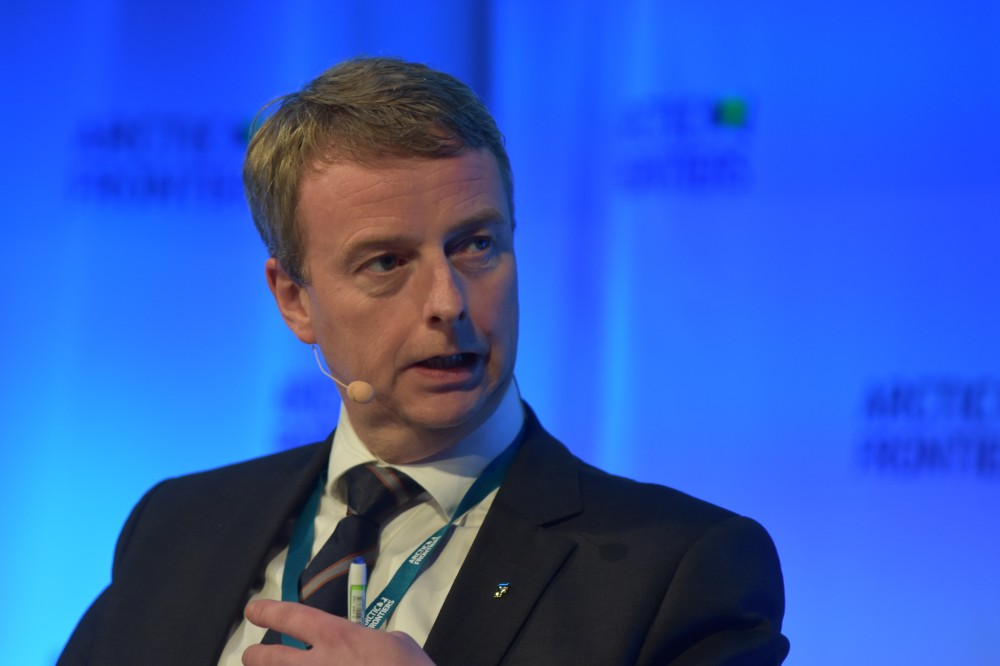Questions mount about Norway’s Arctic oil
Fewer companies are showing interest, wells are dry and the government signals that it will postpone its its next major licensing round.

Norway is selling more natural gas than ever. In 2017, companies extracted 236.4 million standard cubic meters of oil equivalents, an increase of 2.7 percent from 2016. And oil and gas production is expected to continue to grow for several years ahead.
“The high production prognosis is good news for everyone who care for value generation in Norway,” Bente Nyland, Director of the Norwegian Petroleum Directorate, says in her 2017 annual report.
According to Nyland, the future of the Norwegian petroleum industry lies in the Barents Sea, where almost two-thirds of undiscovered resources are located. “This region will be vital for a continued high and long-term production,” she says.
Uneasy companies
However, despite the assurances from the directorate leader, prospects in the region are increasingly questioned both by government interests and companies.
The 2017 drilling season in the Barents Sea showed only slim results. Although the number of wells drilled was record-high, no major discoveries were made.
Several companies now appear to have a cooled-down interest in the region. That was reflected in information about the upcoming 24th Norwegian licensing round. On the table is a historical opening of new exploration acreage in Arctic waters. Still, only 11 companies intend to take part in the round, less that half of the number in the previous 23rd round.
More questions now arise in connection with the country’s next 25th licensing round, originally due to be announced later this year.
Politicial disagreement
Minister of Petroleum and Energy Terje Søviknes confirms to E24 that the round is likely to be significantly postponed. Originally, the licensing rounds are announced every other year, and the most recent round, the 24th, was announced in 2016.
Søviknes now hints that the 25th round might not be announced before year 2021.
In the background lures a political standoff over drilling in the Arctic. And the recent inclusion of the Liberal Party in the Norwegian government coalition has somewhat tilted the balance. The new government declaration presented earlier this month includes includes a continued ban on drilling in the Lofoten waters. The document signed by the leaders of the Conservative Party, Progress Party and Liberal Party, also calls for restrictive measures in the area of the Bear Island, the Jan Mayen and along Arctic ice edge.
Furthermore, the government declaration states that the 25th Licensing Round is not to be conducted until a major revision of the Management Plan for the Barents Sea and Lofoten is completed.
The management plan regulates key issues of environment and industry in the vulnerable northern waters and was first elaborated and presented in 2005. Revisions were made in 2010 and 2015.
Continued drilling
Minister Søviknes admits to E24 that he and his petro-friendly Progress Party is unhappy about the political compromise made with the Liberal Party. So do also a number of representatives of the oil industry.
Søviknes stresses that he will do what he can to compensate on other fronts.
“The government platform clearly says that we are to continue the model with two license arrangements and that we will provide stable access to exploration acreage, stable tax system and continued investments in research and technology development,” Søviknes says.
For many years, Norway has provided new drilling blocks through annual so-called Awards in Pre-Defined Areas and bi-annual licensing rounds.
Søviknes’ compensation was made clear only a couple of days after the signing of the government declaration. In the Awards in Pre-Defined Areas presented on Jan. 16, a record-high 75 new licenses were offered to the oil companies. Only five of them were in them Barents Sea. But more is likely to follow from Søviknes and his ministry. As well as from the Directorate of Petroleum.
“In order to continue to have a high level of production also after 2025, it is necessary to discover more profitable resources, including big discoveries [and therefore] we believe that exploration must increase from today’s level, both in mature and un-mature areas,” Bente Nyland says in her sum-up for 2017.